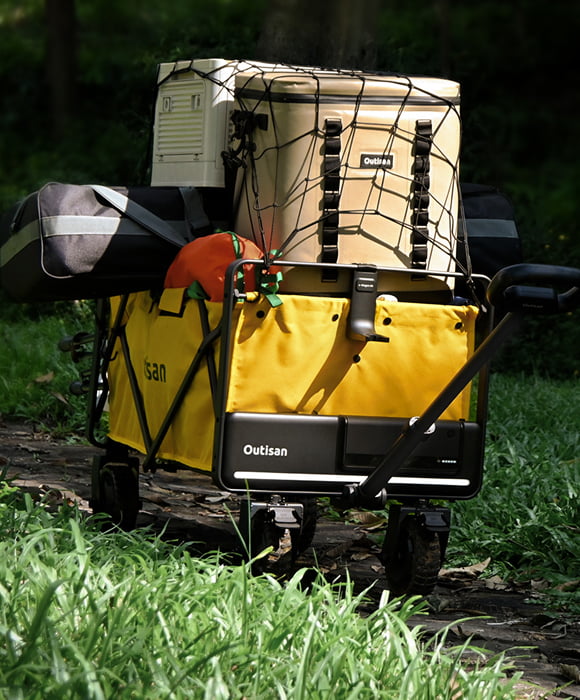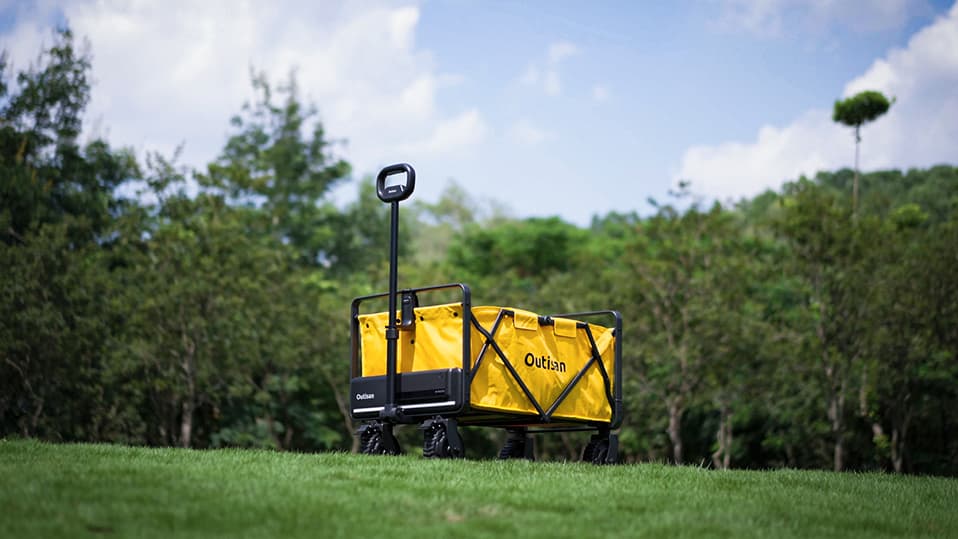
Making the e-Wagon Battery System
The e-Wagon is the world's first electric utility wagon, offering an electric system that makes carrying your gear a simple, enjoyable process. Join us as we take a look at the battery development process that made it all possible.
Why we went electric
Carrying gear outdoors can be such a drain that it sometimes feels like a chore to step outside. And if you're anything like us, you probably wondering if there's a better solution out there. And as it turns out, there is.
With the introduction of the e-Wagon, we've brought forward a user-friendly solution that combines tried-and-tested tech with an innovative electric power system. And this all starts with the battery.
Choosing a battery
Pretty much the first question that popped into our minds was what type of battery chemistry we would use. We eventually boiled the decision down to ternary lithium and LiFePo4, since these are readily employed in the industry. Ternary lithium has a higher energy density compared to LiFePo4, which makes it lighter and more suitable for space-saving designs. This is important for us since we want to keep the weight of the e-Wagon down as much as possible.
In addition, since e-Wagon is intended for outdoor use, we opted for a battery system that was effective for use between -4℉ to 140℉. LiFePo4, despite its other industry advantages, fell short of ternary lithium for our intended use cases, which is why we eventually opted to use ternary lithium batteries.
Battery development process
We then moved on to developing the battery system, which took many factors into consideration. Among some of the things we thought about were the motor power, overall speed, capacity, and distance we could get from every charge. Based on our calculations, we required around 200Wh of battery capacity, and that's when things got interesting.
Choosing battery cells
Standard battery cells on the market include 18650 and 21700 cells. The way this nomenclature is broken down is pretty straightforward. The first two digits in the number represent the diameter in mm, while the third and fourth digits represent the length in mm. This means 18650, one of the most developed and reliable options on the market, has a diameter of 18mm and a length of 65 mm. Due to its robust reliability, mature tech, safety standards, and production capacity, we opted for the 18650 battery cell.
Charging/discharging speeds
After choosing the 18650 battery cell, we set out to determine the C-rate, which is the speed at which the battery charges and discharges. This is important because, generally speaking, a high C-rate battery cell can discharge more power within a period of time, which results in stronger motor performance. A stronger motor performance takes more weight off your shoulders when carrying your gear.
We eventually opted for a 5C, 2500mAh 18650 battery cell, which meant the battery pack could discharge at 15A to meet the requirements of our wheel motors.
Saving space for other components
Our battery pack needs approximately 20 units of 18650 battery cells, and they have to be structured in a way that saves space for other components, such as the control panel, PCB, BMS, charging ports, and other wires. We spent a lot of time simultaneously developing the internal structural design and the outer industrial design until we reached the best balance.
Battery system components
Control panel
The brain of the e-Wagon. All of the control system is integrated into a printed circuit board (PCB). This is where all the sensor signals, control commands, and user interactions are processed. Due to its importance, it's an incredibly complex component, combining both hardware and software. We took a lot of time developing the PCB and creating a smooth control logic system. This system has to be mutually exclusive and collectively exhaustive (MECE), which means all signals can be read correctly and result in only one action.
BMS
The battery management system (BMS) regulates the current, voltage, and temperature in real time. This helps the battery to maintain 75% of its capacity after 500 cycles.
Charging ports/wires
Charging ports and wires have also been tested under strict regulation. For the e-Wagon, we have worked with a world-class supplier to provide the best solution for our audiences.


